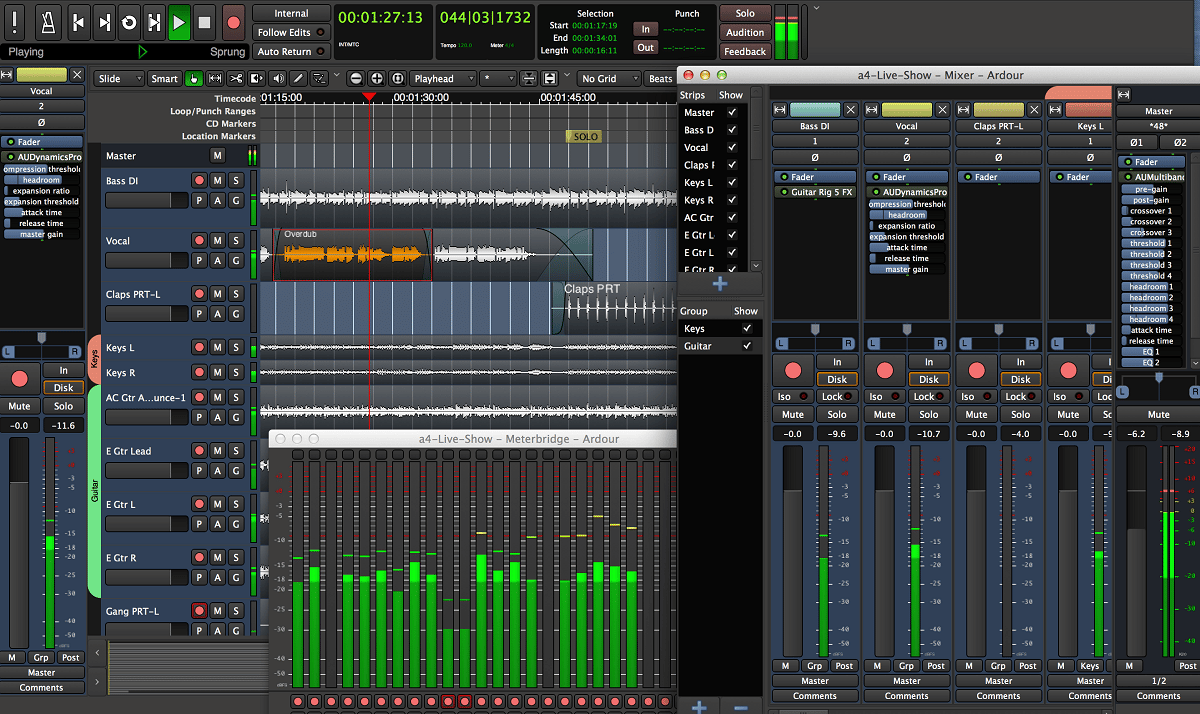
Ardor is free software for multitrack audio and MIDI recording to hard disk. It is cross-platform: it can currently be installed on GNU/Linux, OS X, FreeBSD and Windows operating systems.
The new version of Ardor 8.2 is now available and this release highlights that Support for all Novation LaunchPad devices is completed as well as bug fixes, small new features and improvements.
For those who do not know about Ardor, you should know that is a multiplatform digital audio workstation which you can use for multitrack audio and MIDI recording, audio editing and mixing.
Main new features of Ardor 8.2
In this new version that is presented of Ardor, the implementation of the new function «Note tupling» which is inspired by a feature in the new Ableton Live 12. Note tuplin, allows user while MIDI, Select one or more notes and by pressing "s" divide each note into two equal parts. This function can still be used so the division will increase by 3, 4, 5, etc. ). To cancel the split, you can press “Shift+s”, and to merge – “j”.
Another novelty that stands out in Ardor 8.2 is «No-strobe option» which is a new function that Allows you to deactivate all those elements that can emit blinking lights. This function was added in order to protect users with epilepsy. It is worth mentioning that if this function is enabled, the clocks do not work, no buttons flash and the meters do not move.
Regarding the support improvements, the added support for Solid State Logic UF8 (a USB MIDI / Mackie Control Protocol device), as well as support for the Novation LaunchPad X and LaunchPad Mini devices. This completes Ardor's support for the entire range of Novation LaunchPad mk3 devices.
Of the other changes that stands out from this new version:
- The default sample rate has been changed to 48 kHz.
- When importing tempo maps from standard MIDI files, the tempo map is inserted in the correct position (not always at zero).
- When editing MIDI notes, the note length is already displayed with a detailed cursor.
- Added Mute button to the recorder view.
- It is now possible to clear the LV2 plugin scan information.
- Improved the display of straight lines for note speed.
- Optimized tempo map operations for trivial (and overwhelmingly common) cases of 1 tempo and 1 meter.
Finally If you are interested in knowing more about it, you can check the details in the following link
How to install Ardor on Linux?
Within the repositories of the distributions we can find the package of the application with the detail that possibly not the latest version and besides that this is only a trial version.
That said, if you want to try the app I leave you the commands of installation.
To install Ardor on Debian, Ubuntu and derivatives:
sudo apt install ardour
If you are using Arch Linux or some derivative, you can install the application with this command:
sudo pacman -S ardour
In the case of Fedora, CentOS and derivatives we can install with:
sudo dnf install ardour
For the case openSUSE:
sudo zypper install ardour
And with this you will have the application installed on your system.
How to compile Ardor on Linux?
To begin the construction process, they will first need to install the many dependencies of the program. Ardor is a great audio editing suite and uses a large number of codecs and other tools. To install the dependencies, you should go to Official website, read the documentation and know what they are.
Done the above we proceed to obtain the source code, we open a terminal and execute:
git clone git: //git.ardour.org/ardour/ardour.git cd ardour
Then they should execute the script "waf".
We will need to run it first to scan the system to create new configuration files (makefiles, etc).
Running the waf script will also help them determine if they have all the correct dependencies installed.
The script will refuse to configure without these files, so, if you have problems to find them, first we will execute this command:
./waf configure
This will verify that the dependencies are installed and everything is ready to go. To start the build process, run wow:
./waf
Ardor's audio editing package is very large and it will take a long time to compile. So at this time they can take advantage to do other things.
Made the compilation, now we will change directory and we do it with:
cd gtk2_ardour
Start Ardor with "ardev."
./ardev
At this point we already have the possibility to install the application, we only have to execute:
./waf install
And that's it, you can start enjoying this great professional audio editor.
Very good software...I am not a sound engineer and I have used it at some point. I think it is a professional level DAW, it has nothing to envy of proprietary software like frutiloop or audition. If you don't have enough money to pay for an expensive proprietary software license and you want to get started in the world of music editing, try Ardor!!!